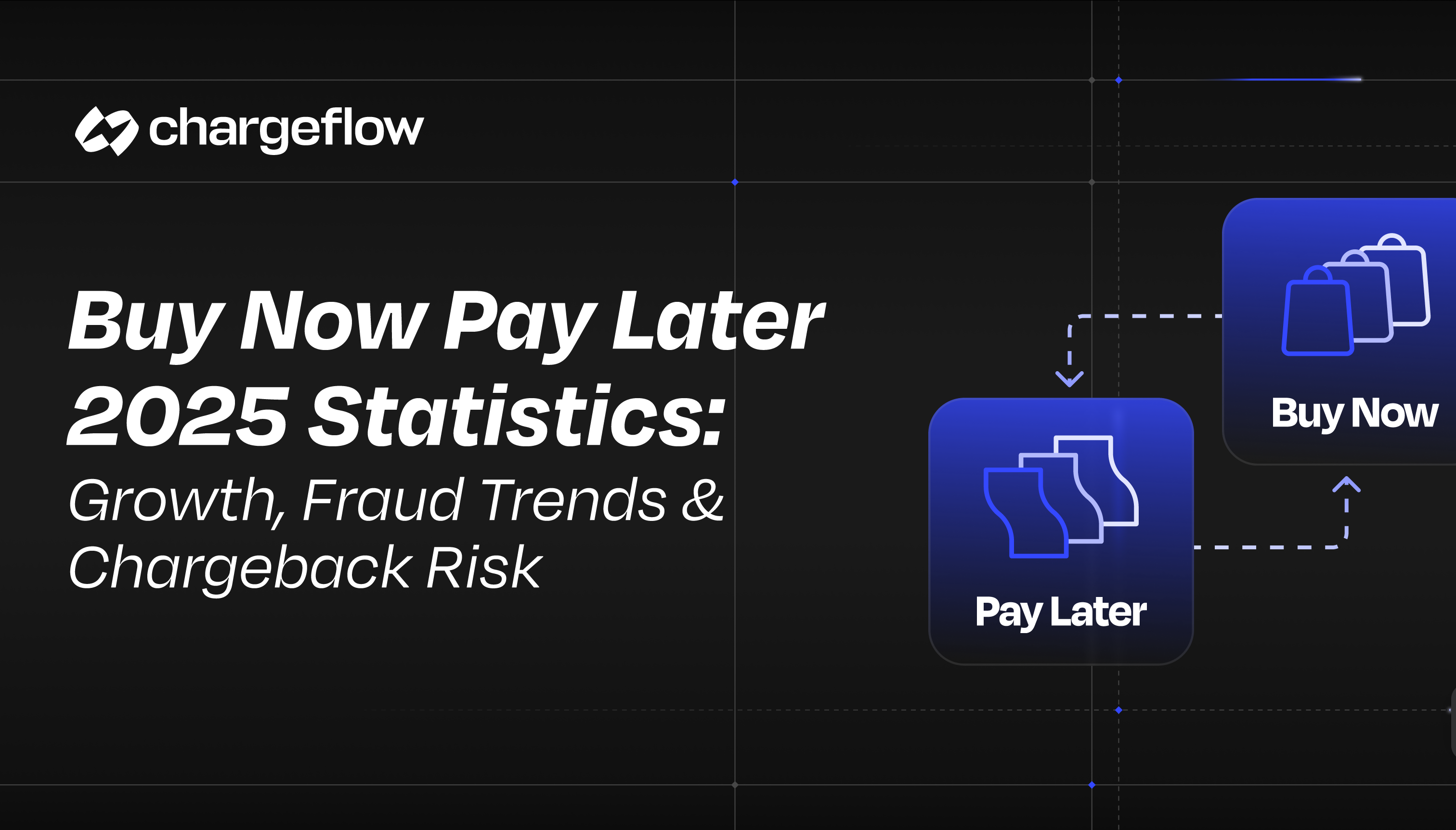9 Important Marketing Metrics Every Business Needs to Track

Chargebacks?
No longer your problem.
Recover 4x more chargebacks and prevent up to 90% of incoming ones, powered by AI and a global network of 15,000 merchants.
Most marketing professionals will agree that these metrics help them shape their strategies. But what exactly are marketing metrics? Let’s find out!
Marketing metrics are the need of the hour for every business, big or small! According to a survey conducted by MIT and Google, 89% of leading marketers use strategic metrics to measure the effectiveness of their campaigns.
Most marketing pros will agree that these metrics help them shape their strategies. They insist that data from monitoring marketing metrics build the foundation for successful campaigns. After all, marketing is a mixture of art and science which requires one to track certain numbers, consistently measure results, and analyze data.
But what exactly are marketing metrics? Let’s find out.
Marketing Metrics 101
It is quite simple to define a marketing metric. They are performance data points used to observe, document, and evaluate the status of a marketing campaign over a specified period. These measurable values are used to highlight the performance of a strategy across varied marketing channels.
A Marketing report typically displays metrics using charts, lists, and graphs. To provide enough statistically relevant data, the indicators are usually presented in a monthly, quarterly, or weekly report.
However, there are a ton of metrics on the market, which may need to be clarified and even overwhelming to track at times. Therefore, here’s a concise list of all the important marketing metrics that can help track the overall marketing return on investment.

9 Key Marketing Metrics
Choosing the right metrics depends on a brand’s goals. It is important to shortlist the ones that align with your company’s objectives and the marketing channels that cater to your target audience.
Still, trying to figure out the impact of evaluating the right marketing metrics? Consider this:
Companies that use marketing analytics are three times more likely to demonstrate a competitive advantage in loyalty or customer engagement!
So here are a few such important marketing metrics that will help you achieve better results and lead to successful campaigns:
1. Cost Per Acquisition (CPA)
CPA is a marketing metric that gives us the overall cost of a single customer completing a specified action. This is first on the list as it helps you find how much it costs you to get a single customer to convert. It covers the total expense incurred from the first touchpoint until the last conversion point.
Here’s the formula to check your CPA during a certain timeframe:
CPA = Total marketing spend / Number of acquisitions
Calculating your cost per acquisition is essential as it helps you appropriately allocate the budget across the marketing channels. You discuss with your marketing department via team messaging and optimize your marketing budget by identifying the cost-effective channels - the ones where the CPA is low while the return on investment is considerably higher. You can integrate business budgeting software to track and optimize spending more efficiently.
2. Return On Ad Spend (ROAS)
Return on ad spend is a very useful marketing metric. It helps you calculate the revenue earned for every single dollar you have spent on advertising. By measuring ROAS you get actionable insights into the effectiveness of your ad campaign.
Automated investments can be particularly effective in optimizing your ROAS, as they allow you to allocate resources more efficiently based on real-time data, reducing manual effort and potential errors.
Returns can be calculated as per your reporting patterns. You can calculate ROAS for one ad or an entire project. Furthermore, you can calculate it based on monthly or yearly net ad spending.
You can estimate the ROAS value in the specified time with this simple formula:
ROAS = Revenue attributed to the campaign / Total cost of that campaign
ROAS can be optimized using a variety of approaches. One technique is to conduct many campaigns in parallel while performing ROAS calculations for each. Low-performing campaigns can be reduced in funding, while higher-performing campaigns receive more. Measuring ROAS can provide insights into future marketing strategies and increase ad spending efficiency.
3. Engagement Rate
Engagement rate is a metric that is commonly used to measure how actively your audience is engaged with your content and how effective your brand efforts are. Engaged consumers interact with brands through behaviors such as likes, comments, and social sharing and often a tell-tale sign of customer loyalty.
Direct actions on a post, such as likes, reactions, or comments, are granular forms of involvement.
These individual engagement indicators are purely vanity measures, but they add up. When analyzed at a high level, they reveal a lot about which of your pieces are most successful and what your audience enjoys.
You can either check your engagement rate on the website through Google Analytics or on social media through the following formula:
Engagement Rate = (Likes and Comments on a Post / Follower Count) x 100

4. Source Of Traffic
One of the most vital aspects of marketing is understanding your target audience and where they come from. With the exponential rise in omnichannel marketing, it becomes difficult to estimate where the traffic on the website comes from.
Geofencing can play a crucial role in this by targeting potential customers based on their location. This technology allows businesses to create virtual boundaries and deliver targeted ads or notifications to users when they enter or leave a specific geographic area, thereby enhancing the effectiveness of marketing campaigns.
Google Analytics has an amazing feature that lets you narrow down the pathway of your website visitors. You can find this option by going to Google Analytics → Acquisition → All Traffic → Channels.
From there, you can filter by social media platform, targeted email campaign, or any other secondary component relevant to your marketing plan.
A few common channels that you may find there are:
- Search Engine Marketing or Paid Search like Google Ads
- Email i.e when someone clicks on your website link through your email marketing campaign
- Organic content on your social media channels
- Ads on Social Media, like Facebook ads
- Lastly, the direct traffic obtained by ranking higher on search engine result pages
5. Click-Through Rate
The click-through rate (CTR) is the percentage of people who clicked on a certain link or call to action (CTA) out of the total number of people who viewed that content over a given period.
For example, you can monitor the click-through rate (CTR) of your blog articles in organic search results to see whether you're using effective title tags and meta descriptions. Research and behavioral analytics show that titles with a positive sentiment tend to have a higher CTR.

6. Bounce Rate
The bounce rate measures the number of times a visitor exits your site without taking any action.
The lower your bounce rate, the better, because it indicates that visitors to your site want to click around and learn about your brand and items — and perhaps even buy something!
One quick and easy strategy to reduce your bounce rate is to include the most important content on your website's homepage. Use your homepage to direct visitors to your e-commerce pages, FAQ, contact form, and SEO blog — or whatever gives the most requested information.
Another technique to drastically lower the bounce rate is to shorten the loading time of your pages. According to a new Google study, the chance of bouncing increases by 32% if a website does not load in three seconds or less.
Google Analytics home dashboard displays your bounce rate. There is no hard and fast rule for determining a "good" bounce rate, however, somewhere between 25 and 65% is generally regarded as safe.
7. Number of Referring Domains or Backlinks
The number of referring domains indicates how many unique websites link to your site at least once.
The number of backlinks indicates the amount of links pointing to your site, including those from referring domains.
Gaining backlinks from authoritative, reliable, and thematically related websites will improve the quality of your backlink profile. Also, consider your website's performance. To do this effectively, focus on white hat link building strategies that ensure your links are earned ethically and align with search engine guidelines.
When your link-building efforts are successful, you will observe an increase in both of these metrics.
However, if you only focus on one of them, referrer domains are the best option. Obtaining one link from each of ten high-quality domains has a greater impact than obtaining ten connections from only one.
That's because Google considers each connection to your site to be a vote of confidence. And if ten domains link to yours, you'll get ten votes instead of one.
8. Net Promoter Score
Net Promoter Scores (NPS) encourage customers to rate how likely they are to suggest your product or business on a scale of 1 to 10. Customers are classified as promoters (very likely to recommend your brand), critics (unlikely to make a referral), or passive (neutral).
Quantifying how customers perceive your brand using this numerical score (together with their written comments) provides businesses with vital information about what they are doing well and where they can improve and they can work on increasing their customer retention.
Taking use of consumers' word-of-mouth recommendations and referrals is also a cost-efficient and effective growth approach (in fact, research shows that friends and family are far more persuasive than commercials or influencers in driving brand adoption).

9. Chargeback Ratio
A chargeback ratio is measured by dividing the total number of chargebacks against your business by the total transactions processed in a particular period. You must be wondering, how did a financial metric get on the list of must-track marketing metrics. Well, here’s the thing.
Chargeback ratios can serve as a valuable marketing metric by indicating customer satisfaction. Identifying the demographic of those requesting chargebacks can also reflect if you have been targeting the wrong age group altogether.
Not just that. Chargeback ratios are a great marketing metric to gauge a brand’s reputation through Chargeflow Insights. Sometimes, customers can also provide product improvement feedback, which teams can use when improving their product and marketing the changes.
Let’s Get Tracking!
The most important metrics have been highlighted in this article. You can dive even deeper into the analytics by focusing on measuring the success of your content on various channels like social media, emails, and more. That will help you decide the metric that you need to check with higher precision.
For example, a social media marketing strategy requires you to monitor the engagement rate, and an SEO strategy will lead to monitoring the number of backlinks. Furthermore, an email marketing campaign needs to be evaluated through metrics like click-through rates, bounce rates, and so on. Google Ads dashboard template helps streamline the process of tracking and analyzing your advertising metrics.
So let’s start brainstorming, shortlist the right metric, and get to tracking the analytics to ensure the success of your marketing efforts with ease.
Tying it All Together
Just as tracking the right marketing metrics helps optimize your campaigns and maximize ROI, managing risks like chargebacks is equally essential for protecting your profits. With solutions like Chargeflow, businesses ensure that chargebacks don’t offset their hard-earned revenue, providing a more holistic approach to sustainable growth.

Chargebacks?
No longer your problem.
Recover 4x more chargebacks and prevent up to 90% of incoming ones, powered by AI and a global network of 15,000 merchants.






























.png)








